Docker selenium自动化 - Python调用容器实例跑自动化查天气实例演示,docker selenium自动化环境部署过程
Posted 挣扎的蓝藻
tags:
篇首语:本文由小常识网(cha138.com)小编为大家整理,主要介绍了Docker selenium自动化 - Python调用容器实例跑自动化查天气实例演示,docker selenium自动化环境部署过程相关的知识,希望对你有一定的参考价值。
Docker selenium自动化 - 环境部署与 Python 自动化运行实战演示
[系列文章篇]
篇章一:Docker selenium 自动化 - windows 版 docker 的安装与运行环境检测
[问题处理篇]
篇章一:Docker selenium 自动化 - 修改 /dev/shm 路径大小实例演示,“session deleted because of page crash” 问题解决
第一章:docker selenium 环境部署
① 下载 selenium 镜像
首先拉取 selenium/hub 镜像。
执行命令:docker pull selenium/hub

然后拉取 selenium/node-chrome 镜像。
执行命令:docker pull selenium/node-chrome
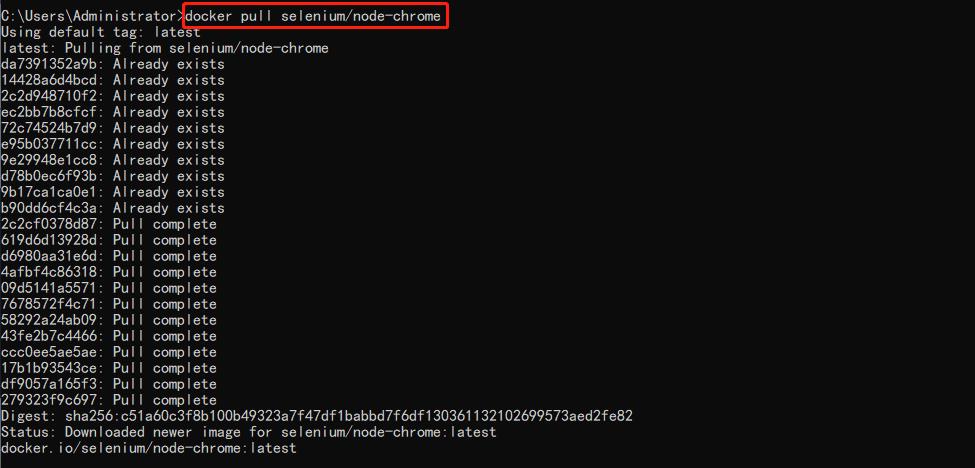
docker images 查看容器镜像。

② 容器 selenium 实例的创建与运行
创建容器实例:
docker run -d -P --name=hub selenium/hub
docker run -d -P --link=hub:hub selenium/node-chrome
查看容器实例:
docker ps

可以通过 docker start/stop 实例名 来启动停用容器实例。
一般服务器重启后,就需要来启动容器了。

③ 浏览器访问 selenium Grid
docker ps 可以查看生成的端口,通过本地 ip + 端口号 即可访问 selenium Grid 控制台。
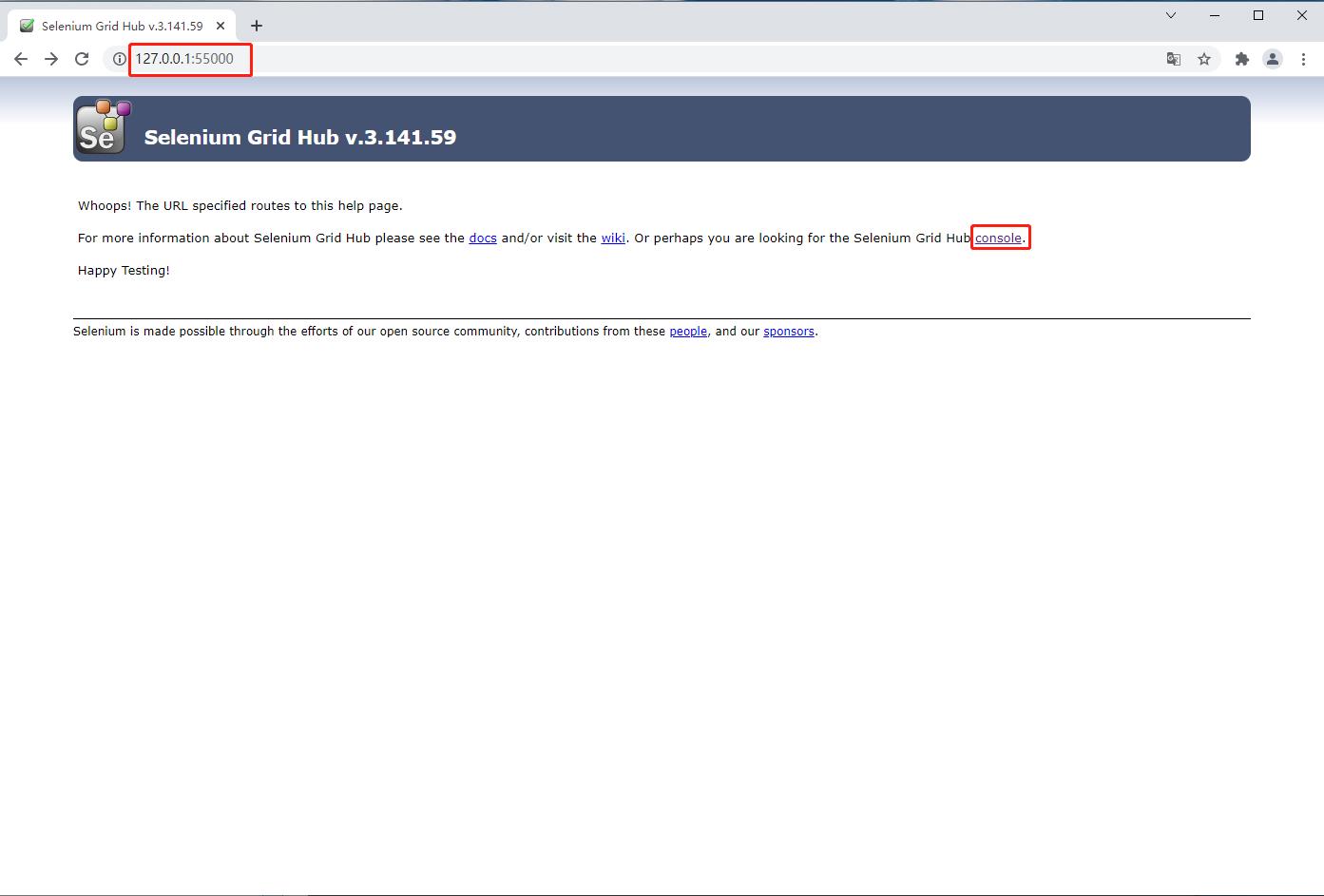
可以看到浏览器版本相关信息。
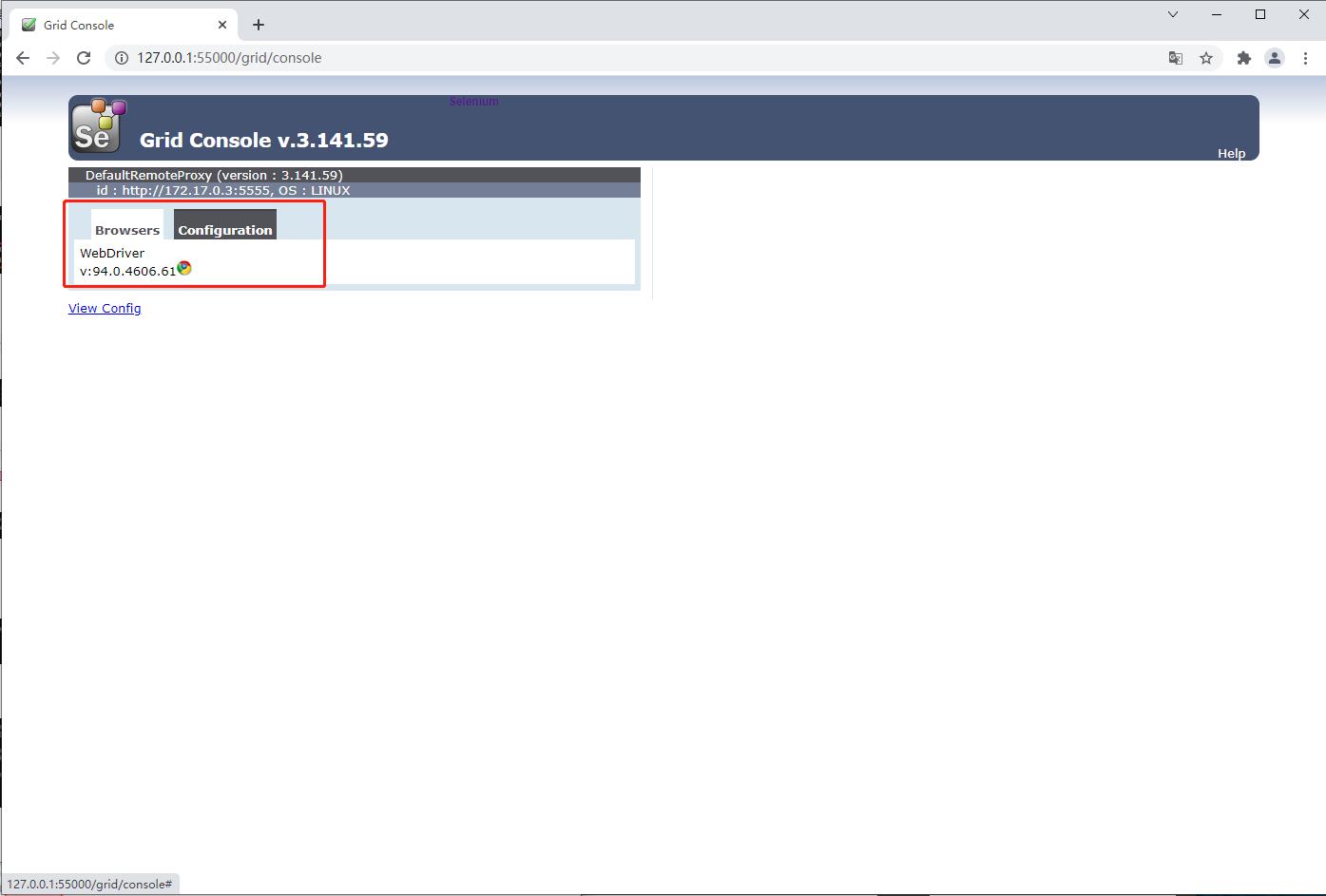
可以看到相关配置信息。
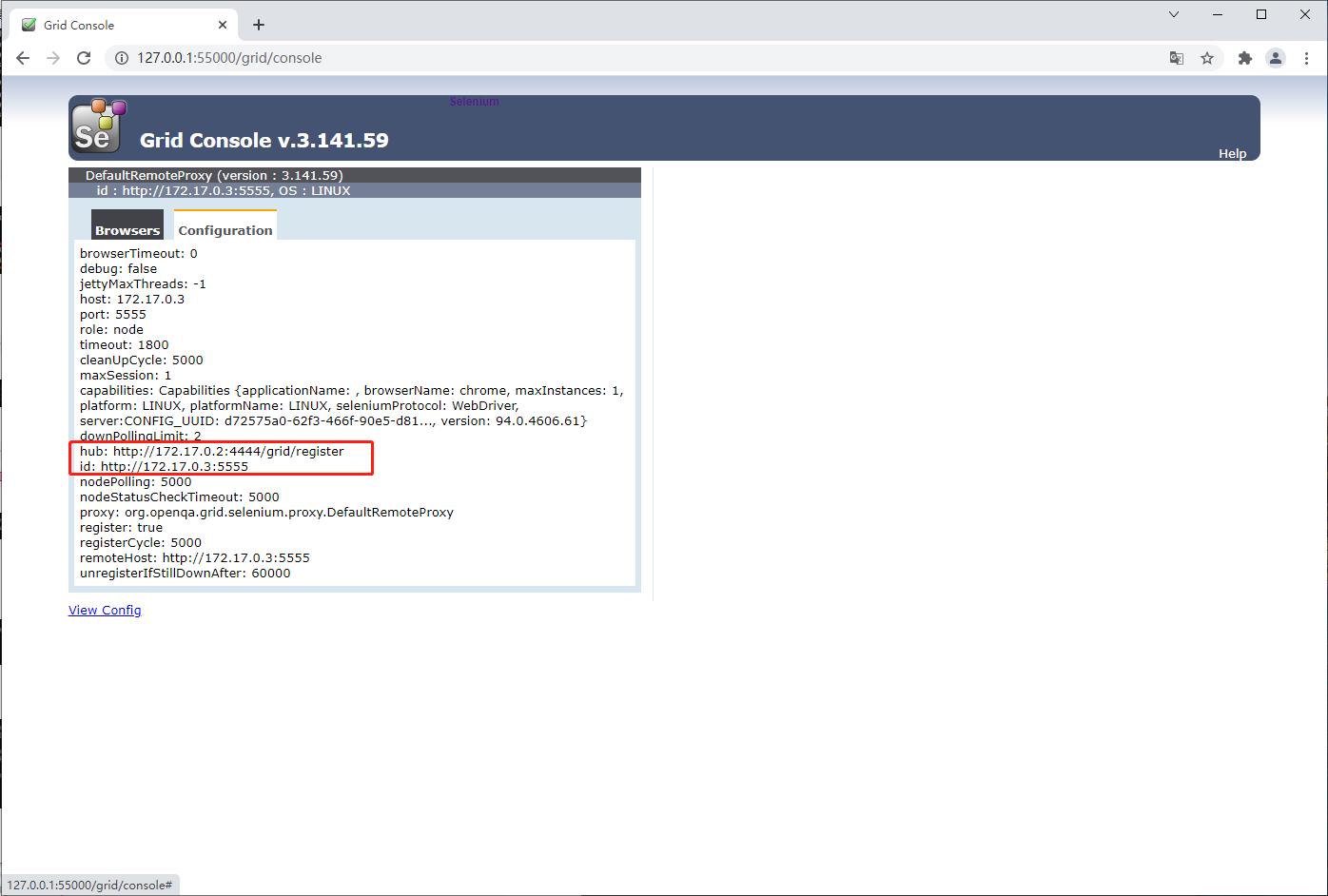
④ docker 命令大全
docker 相关命令
docker --help
Usage: docker [OPTIONS] COMMAND
A self-sufficient runtime for containers
Options:
--config string Location of client config files (default
"C:\\\\Users\\\\Administrator\\\\.docker")
-c, --context string Name of the context to use to connect to the
daemon (overrides DOCKER_HOST env var and
default context set with "docker context use")
-D, --debug Enable debug mode
-H, --host list Daemon socket(s) to connect to
-l, --log-level string Set the logging level
("debug"|"info"|"warn"|"error"|"fatal")
(default "info")
--tls Use TLS; implied by --tlsverify
--tlscacert string Trust certs signed only by this CA (default
"C:\\\\Users\\\\Administrator\\\\.docker\\\\ca.pem")
--tlscert string Path to TLS certificate file (default
"C:\\\\Users\\\\Administrator\\\\.docker\\\\cert.pem")
--tlskey string Path to TLS key file (default
"C:\\\\Users\\\\Administrator\\\\.docker\\\\key.pem")
--tlsverify Use TLS and verify the remote
-v, --version Print version information and quit
Management Commands:
builder Manage builds
buildx* Build with BuildKit (Docker Inc., v0.6.3)
compose* Docker Compose (Docker Inc., v2.0.0)
config Manage Docker configs
container Manage containers
context Manage contexts
image Manage images
manifest Manage Docker image manifests and manifest lists
network Manage networks
node Manage Swarm nodes
plugin Manage plugins
scan* Docker Scan (Docker Inc., v0.8.0)
secret Manage Docker secrets
service Manage services
stack Manage Docker stacks
swarm Manage Swarm
system Manage Docker
trust Manage trust on Docker images
volume Manage volumes
Commands:
attach Attach local standard input, output, and error streams to a running container
build Build an image from a Dockerfile
commit Create a new image from a container's changes
cp Copy files/folders between a container and the local filesystem
create Create a new container
diff Inspect changes to files or directories on a container's filesystem
events Get real time events from the server
exec Run a command in a running container
export Export a container's filesystem as a tar archive
history Show the history of an image
images List images
import Import the contents from a tarball to create a filesystem image
info Display system-wide information
inspect Return low-level information on Docker objects
kill Kill one or more running containers
load Load an image from a tar archive or STDIN
login Log in to a Docker registry
logout Log out from a Docker registry
logs Fetch the logs of a container
pause Pause all processes within one or more containers
port List port mappings or a specific mapping for the container
ps List containers
pull Pull an image or a repository from a registry
push Push an image or a repository to a registry
rename Rename a container
restart Restart one or more containers
rm Remove one or more containers
rmi Remove one or more images
run Run a command in a new container
save Save one or more images to a tar archive (streamed to STDOUT by default)
search Search the Docker Hub for images
start Start one or more stopped containers
stats Display a live stream of container(s) resource usage statistics
stop Stop one or more running containers
tag Create a tag TARGET_IMAGE that refers to SOURCE_IMAGE
top Display the running processes of a container
unpause Unpause all processes within one or more containers
update Update configuration of one or more containers
version Show the Docker version information
wait Block until one or more containers stop, then print their exit codes
Run 'docker COMMAND --help' for more information on a command.
To get more help with docker, check out our guides at https://docs.docker.com/go/guides/
docker run 相关命令
docker run --help
Usage: docker run [OPTIONS] IMAGE [COMMAND] [ARG...]
Run a command in a new container
Options:
--add-host list Add a custom host-to-IP mapping
(host:ip)
-a, --attach list Attach to STDIN, STDOUT or STDERR
--blkio-weight uint16 Block IO (relative weight),
between 10 and 1000, or 0 to
disable (default 0)
--blkio-weight-device list Block IO weight (relative device
weight) (default [])
--cap-add list Add Linux capabilities
--cap-drop list Drop Linux capabilities
--cgroup-parent string Optional parent cgroup for the
container
--cgroupns string Cgroup namespace to use
(host|private)
'host': Run the container in
the Docker host's cgroup namespace
'private': Run the container in
its own private cgroup namespace
'': Use the cgroup
namespace as configured by the
default-cgroupns-mode
option on the daemon (default)
--cidfile string Write the container ID to the file
--cpu-period int Limit CPU CFS (Completely Fair
Scheduler) period
--cpu-quota int Limit CPU CFS (Completely Fair
Scheduler) quota
--cpu-rt-period int Limit CPU real-time period in
microseconds
--cpu-rt-runtime int Limit CPU real-time runtime in
microseconds
-c, --cpu-shares int CPU shares (relative weight)
--cpus decimal Number of CPUs
--cpuset-cpus string CPUs in which to allow execution
(0-3, 0,1)
--cpuset-mems string MEMs in which to allow execution
(0-3, 0,1)
-d, --detach Run container in background and
print container ID
--detach-keys string Override the key sequence for
detaching a container
--device list Add a host device to the container
--device-cgroup-rule list Add a rule to the cgroup allowed
devices list
--device-read-bps list Limit read rate (bytes per second)
from a device (default [])
--device-read-iops list Limit read rate (IO per second)
from a device (default [])
--device-write-bps list Limit write rate (bytes per
second) to a device (default [])
--device-write-iops list Limit write rate (IO per second)
to a device (default [])
--disable-content-trust Skip image verification (default true)
--dns list Set custom DNS servers
--dns-option list Set DNS options
--dns-search list Set custom DNS search domains
--domainname string Container NIS domain name
--entrypoint string Overwrite the default ENTRYPOINT
of the image
-e, --env list Set environment variables
--env-file list Read in a file of environment variables
--expose list Expose a port or a range of ports
--gpus gpu-request GPU devices to add to the
container ('all' to pass all GPUs)
--group-add list Add additional groups to join
--health-cmd string Command to run to check health
--health-interval duration Time between running the check
(ms|s|m|h) (default 0s)
--health-retries int Consecutive failures needed to
report unhealthy
--health-start-period duration Start period for the container to
initialize before starting
health-retries countdown
(ms|s|m|h) (default 0s)
--health-timeout duration Maximum time to allow one check to
run (ms|s|m|h) (default 0s)
--help Print usage
-h, --hostname string Container host name
--init Run an init inside the container
that forwards signals and reaps
processes
-i, --interactive Keep STDIN open even if not attached
--ip string IPv4 address (e.g., 172.30.100.104)
--ip6 string IPv6 address (e.g., 2001:db8::33)
--ipc string IPC mode to use
--isolation string Container isolation technology
--kernel-memory bytes Kernel memory limit
-l, --label list Set meta data on a container
--label-file list Read in a line delimited file of labels
--link list Add link to another container
--link-local-ip list Container IPv4/IPv6 link-local
addresses
--log-driver string Logging driver for the container
--log-opt list Log driver options
--mac-address string Container MAC address (e.g.,
92:d0:c6:0a:29:33)
-m, --memory bytes Memory limit
--memory-reservation bytes Memory soft limit
--memory-swap bytes Swap limit equal to memory plus
swap: '-1' to enable unlimited swap
--memory-swappiness int Tune container memory swappiness
(0 to 100) (default -1)
--mount mount Attach a filesystem mount to the
container
--name string Assign a name to the container
--network network Connect a container to a network
--network-alias list Add network-scoped alias for the
container
--no-healthcheck Disable any container-specified
HEALTHCHECK
--oom-kill-disable Disable OOM Killer
--oom-score-adj int Tune host's OOM preferences (-1000
to 1000)
--pid string PID namespace to use
--pids-limit int Tune container pids limit (set -1
for unlimited)
--platform string Set platform if server is
multi-platform capable
--privileged Give extended privileges to this
container
-p, --publish list Publish a container's port(s) to
the host
-P, --publish-all Publish all exposed ports to
random ports
--pull string Pull image before running
("always"|"missing"|"never")
(default "missing")
--read-only Mount the container's root
filesystem as read only
--restart string Restart policy to apply when a
container exits (default "no")
--rm Automatically remove the container
when it exits
--runtime string Runtime to use for this container
--security-opt list Security Options
--shm-size bytes Size of /dev/shm
--sig-proxy Proxy received signals to the
process (default true)
--stop-signal string Signal to stop a container
(default "15")
--stop-timeout int Timeout (in seconds) to stop a
container
--storage-opt list Storage driver options for the
container
--sysctl map Sysctl options (default map[])
--tmpfs list Mount a tmpfs directory
-t, --tty Allocate a pseudo-TTY
--ulimit ulimit Ulimit options (default [])
-u, --user string Username or UID (format:
<name|uid>[:<group|gid>])
--userns string User namespace to use
--uts string UTS namespace to use
-v, --volume list Bind mount a volume
--volume-driver string Optional volume driver for the
container
--volumes-from list Mount volumes from the specified
container(s)
-w, --workdir string Working directory inside the container
第二章:Python 调用 docker selenium 执行自动化实例演示
① 源码展示
# -*- coding: UTF8 -*-
# 2021.11.16
# 小蓝枣
# docker selenium 自动化
from selenium import webdriver
from time import sleep
driver = webdriver.Remote(
command_executor='http://127.0.0.1:55006/wd/hub',
desired_capabilities='browserName': 'chrome'
)
try:
# 登录中国气象网查看北京天气
driver.get('http://www.weather.com.cn/weather1d/101010100.shtml')
sleep(3)
# 读取天气信息
bj_temperature = driver.find_element_by_xpath('//*[@class="sk mySkyNull"]//*[@class="tem"]/*').text
bj_wind_direction = driver.find_element_by_xpath('//*[@class="sk mySkyNull"]//*[@class="zs w"]/span').text
bj_wind_class = driver.find_element_by_xpath('//*[@class="sk mySkyNull"]//*[@class="zs w"]/em').text
bj_air_quality = driver.find_element_by_xpath('//*[@class="sk mySkyNull"]//*[@class="zs pol"]//a').text
bj_weather = '''
城市:北京
当前温度:%s
风向:%s
风力:%s
空气质量:%s
'''%(bj_temperature,bj_wind_direction,bj_wind_class,bj_air_quality)
# 打印抓取的天气信息
print(bj_weather)
# 保存截图
driver.get_screenshot_as_file("docker_selenium_run_001.png")
# 保证出错后进程正常释放
finally:
driver.quit()
② 运行效果
抓取的天气信息如下:

同时可以看到保存的截图。

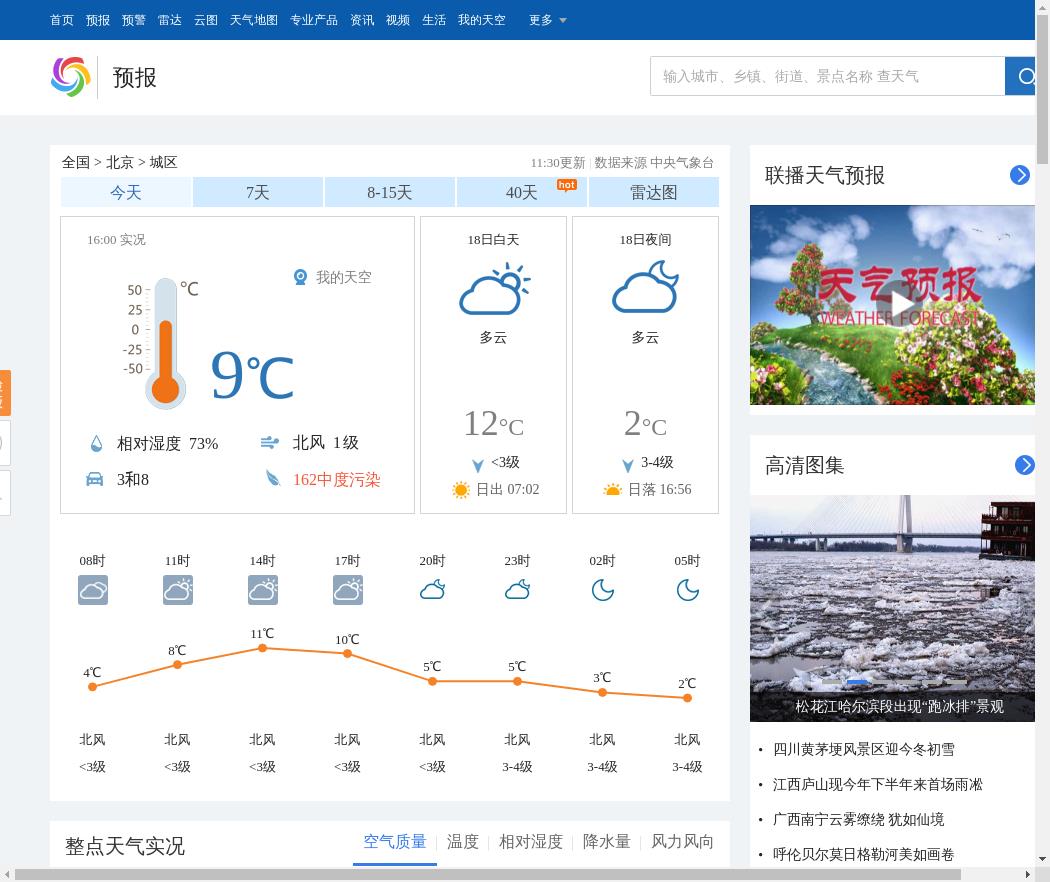
喜欢的点个赞❤吧!
以上是关于Docker selenium自动化 - Python调用容器实例跑自动化查天气实例演示,docker selenium自动化环境部署过程的主要内容,如果未能解决你的问题,请参考以下文章
UI自动化-05-helium-Selenium WebDriver
Docker selenium 自动化 - 使用python操作docker,python运行启用停用和查询容器实例演示